Robert J. Dole Hall
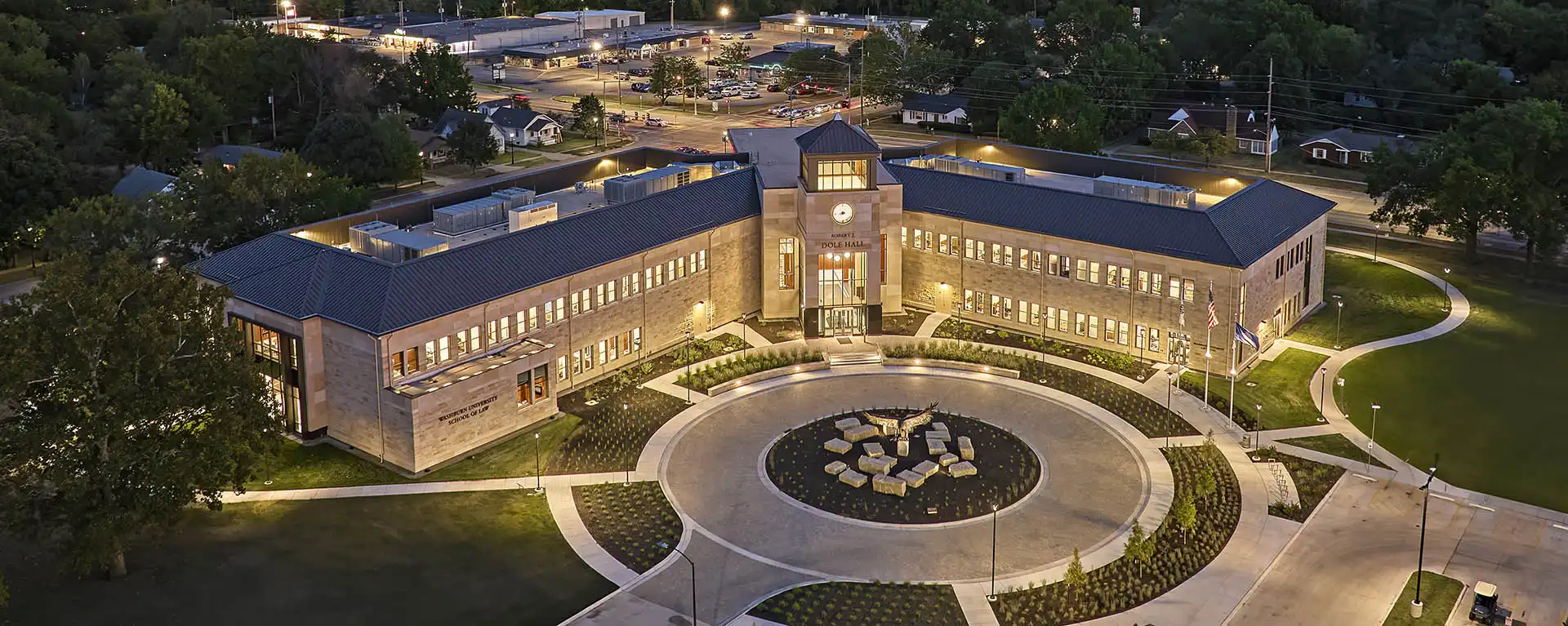

Robert J. Dole offers an unparalleled experience for Washburn Law students and was designed with their learning needs in mind. Equipped with innovative technology, it supports seamless in-class and distance education. The building boasts numerous group and intimate study spaces and is filled with natural light, creating an inspiring learning environment. Its open design fosters easy access to faculty and administration, promoting collaboration. Plus, both an appellate and trial courtroom provide invaluable real-world experience and opportunities to hone your advocacy skills.
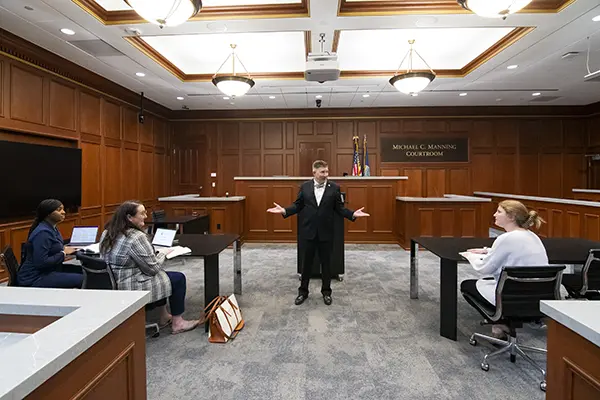 Washburn Law’s Robert J. Dole Hall features two premier courtrooms: the Michael C. Manning Trial Courtroom and the Heath Family Appellate Courtroom. Having access to both courtrooms in one building allows students the opportunity to not only hone their legal skills, but also to observe real-life lawyers and trials as they occur. The appellate space can host the full Kansas Supreme Court as well as panels of the Kansas Court of Appeals for actual hearings, providing unparalleled real-world exposure. And in the trial courtroom, students can practice their pre-trial and trial advocacy skills in a setting complete with areas for a judge, witness and jury. Together, the courtrooms provide an advantage to Washburn Law students, as they were built to the exact specifications of courtrooms across the country and are equipped with technology students will use in the real world.
Washburn Law’s Robert J. Dole Hall features two premier courtrooms: the Michael C. Manning Trial Courtroom and the Heath Family Appellate Courtroom. Having access to both courtrooms in one building allows students the opportunity to not only hone their legal skills, but also to observe real-life lawyers and trials as they occur. The appellate space can host the full Kansas Supreme Court as well as panels of the Kansas Court of Appeals for actual hearings, providing unparalleled real-world exposure. And in the trial courtroom, students can practice their pre-trial and trial advocacy skills in a setting complete with areas for a judge, witness and jury. Together, the courtrooms provide an advantage to Washburn Law students, as they were built to the exact specifications of courtrooms across the country and are equipped with technology students will use in the real world.
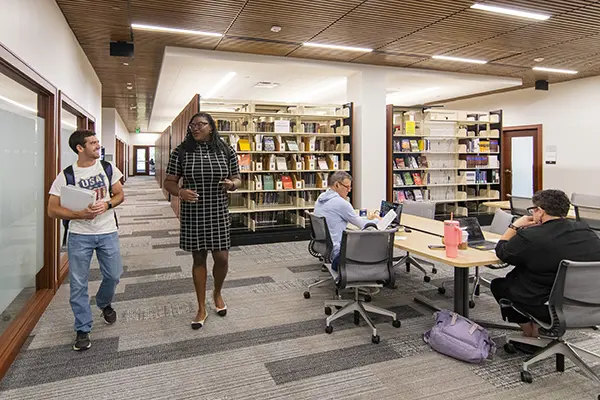 The Hon. Joseph C. Morris Library Suite is more than just a collection of books. The 10,000 square foot space, serves as a gathering point for students to study together, and the entire library is a vibrant amalgamation of spaces designed to foster collaboration, individual research and multi-disciplinary learning. At the heart of the library is the reading room, which includes comfortable seating, built-in tables, and ample plug-ins, providing a calm oasis designed for focused study. Other new additions include nine online reservable study rooms equipped with the latest technology to screencast from laptops, a common area with movable furniture to provide students the flexibility to customize their learning environment, rolling stack shelving that allows students to find exactly what they need with the push of a button, and a recording studio that allows students access to professional lighting, cameras and backdrops for mock trials, job interviews and other recording needs.
The Hon. Joseph C. Morris Library Suite is more than just a collection of books. The 10,000 square foot space, serves as a gathering point for students to study together, and the entire library is a vibrant amalgamation of spaces designed to foster collaboration, individual research and multi-disciplinary learning. At the heart of the library is the reading room, which includes comfortable seating, built-in tables, and ample plug-ins, providing a calm oasis designed for focused study. Other new additions include nine online reservable study rooms equipped with the latest technology to screencast from laptops, a common area with movable furniture to provide students the flexibility to customize their learning environment, rolling stack shelving that allows students to find exactly what they need with the push of a button, and a recording studio that allows students access to professional lighting, cameras and backdrops for mock trials, job interviews and other recording needs.
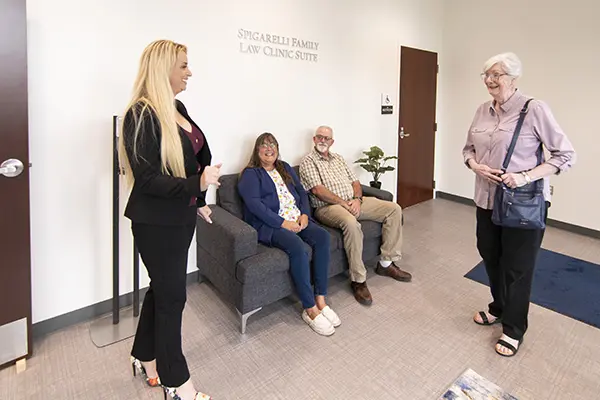 Since 1970, the Washburn Law Clinic has helped members of the local community gain legal representation while preparing students to become practicing lawyers, and with the move to the new law building, the Clinic has expanded its footprint to better serve its clients and students. From the bright, open reception area to the spacious interview rooms with large windows, the space creates a welcoming environment for clients. The space also features a workspace and conference room that allows for collaboration as students work together to help solve their clients' problems.
Since 1970, the Washburn Law Clinic has helped members of the local community gain legal representation while preparing students to become practicing lawyers, and with the move to the new law building, the Clinic has expanded its footprint to better serve its clients and students. From the bright, open reception area to the spacious interview rooms with large windows, the space creates a welcoming environment for clients. The space also features a workspace and conference room that allows for collaboration as students work together to help solve their clients' problems.
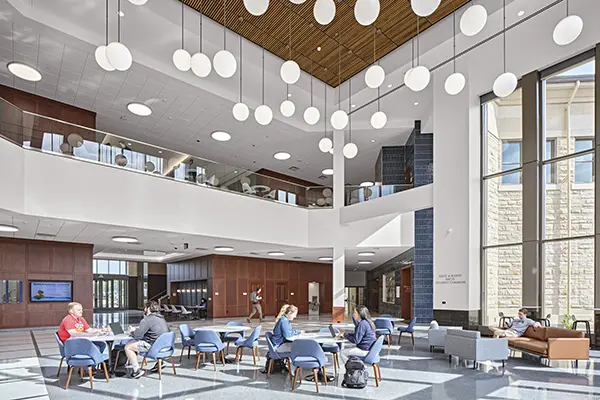 The design of the building embraces a contemporary approach to legal education, setting it apart from many legal education facilities. Instead of the traditional stationary lecture halls, Dole Hall features adaptable classrooms that cater to individual course needs. Cutting-edge technology mirrors what students will encounter post-graduation and supports the expansion of the Third Year Anywhere® program with specialized classrooms and recording studios that embrace this form of distance learning. Faculty and administration are located throughout the building with our open-door policy in mind. Faculty offices are strategically placed near classrooms while administrative suites provide a "one-stop-shop" experience. Bathed in natural light, classrooms and common areas create an inviting atmosphere, and various study spaces tucked throughout the building accommodate diverse student learning needs.
The design of the building embraces a contemporary approach to legal education, setting it apart from many legal education facilities. Instead of the traditional stationary lecture halls, Dole Hall features adaptable classrooms that cater to individual course needs. Cutting-edge technology mirrors what students will encounter post-graduation and supports the expansion of the Third Year Anywhere® program with specialized classrooms and recording studios that embrace this form of distance learning. Faculty and administration are located throughout the building with our open-door policy in mind. Faculty offices are strategically placed near classrooms while administrative suites provide a "one-stop-shop" experience. Bathed in natural light, classrooms and common areas create an inviting atmosphere, and various study spaces tucked throughout the building accommodate diverse student learning needs.
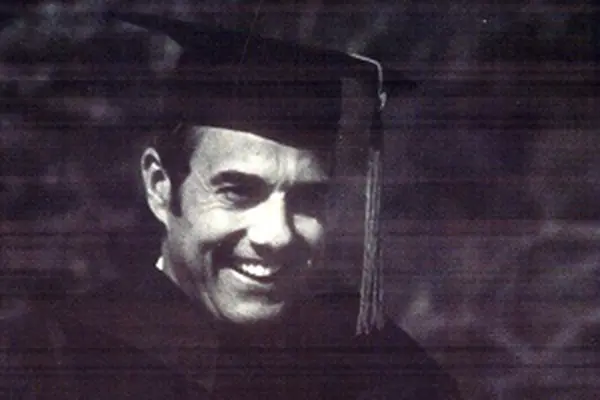
Senator Robert J. Dole, who graduated with his undergraduate and law degrees in 1952, was a great friend to Washburn and truly lived Washburn’s motto of ‘non nobis solum,’ ‘not for ourselves alone,’ throughout his life. The building was dedicated in his name to honor his legacy of service and leadership to the people of Kansas and the nation.
Born July 22, 1923 in Russell, Kan., Dole want on to enlist in the army in 1942. After recovering from an injury sustained during World War II, he enrolled at Washburn. He went on to serve in the Kansas House of Representatives, as Russell County attorney and as a member of the U.S. House of Representatives before spending nearly 30 years as a U.S. senator.
He was chair of the Republican National Committee, Senate minority leader and Senate majority leader, where he set a record as the longest-serving Republican leader. Dole was President Gerald Ford's vice-presidential running mate in 1976 and a Republican presidential candidate in both 1988 and 1996, earning the GOP nomination in 1996. He served as national chair of the World War II Memorial Campaign. In January 2018, Dole was honored with the Congressional Gold Medal, Congress' highest civilian honor. He was given an honorary promotion to Army colonel that same year.
Dole remained committed to serving and giving back to Washburn throughout his life. Along with his wife, Sen. Elizabeth Dole, they established and funded at Washburn the Senator Robert J. Dole Law Professorship, the Robert J. Dole Center for Law and Government and the Honorable Robert J. Dole Scholarship for Law Students with Disabilities. He served on the School of Law board of governors and the Alumni Association and Foundation board of trustees.
Washburn recognized Dole with two honorary doctor of law degrees in 1969 and 1985. A bronze statue of Dole was erected on campus in 2018 and, in addition to the building, the outdoor plaza at the new School of Law building will be named in his honor. The Washburn Alumni Association honored Dole with a Distinguished Service Award in 1966, and the School of Law Alumni Association gave him a Lifetime Achievement Award in 2007.